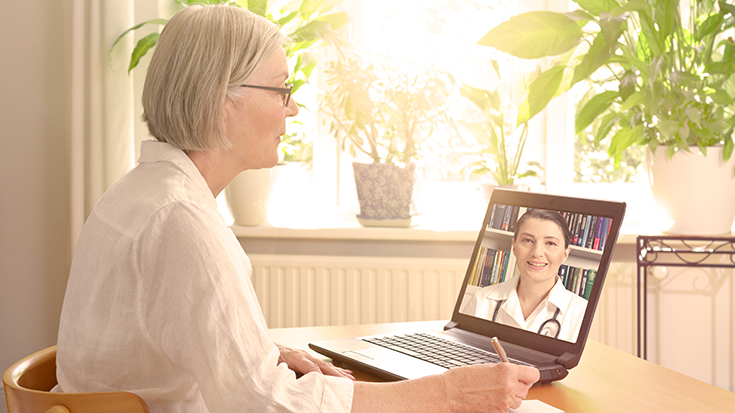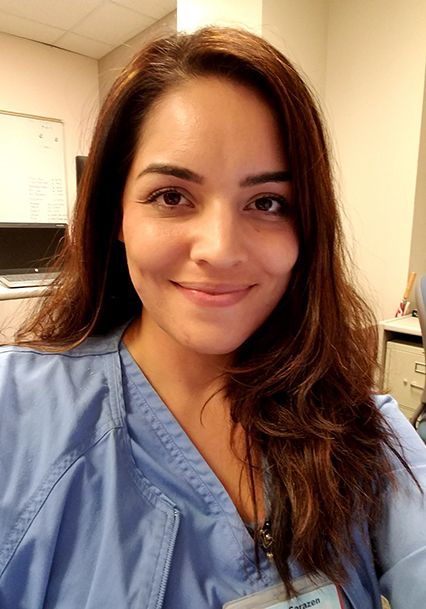
Technology tools help assist RTs with all aspects of delivering and managing care. They can even help RTs deliver care beyond the boundaries of the clinic. Micaela Sarazen, BSRT, RRT, RRT-NPS, a neuromuscular respiratory therapist at UC Davis Medical Center, shares how she uses technology tools to enhance her team’s delivery of remote care for patients.
Improving quality of life

According to Sarazen, in neuromuscular disease, noninvasive ventilation has been shown to be the only proven treatment that can add years to patients’ lives. As a neuromuscular respiratory therapist, Sarazen was tasked with creating a program to aid patients with acceptance of their noninvasive ventilation devices.
“Over the past few years, we have used a telehealth system that allows our patients to be followed more closely by the medical equipment company,” Sarazen said. “The telehealth program provided by the DME company facilitates a high-touch follow up schedule with the patients through both video conferencing and additional in-home visits.”
Sarazen explained that the majority of these in-home visits are aimed to be scheduled within the first 90 days of equipment setup.
“This is well above the standard of care of once a month follow up,” Sarazen said. “This program is intended to answer questions and troubleshoot reasons for patients to not accept their devices. This, along with in-clinic remote monitoring of patient devices, has helped achieve very high compliance on noninvasive ventilation devices.”
Sarazen feels that this program and practice of care can lead to both increased quality of life and extend the life of these patients.
Immediate troubleshooting
“The intention with using these tools was to see the effect the additional monitoring would have on the patients,” Sarazen said. “Would they be more compliant because they knew we were watching? Were there changes that could easily be made remotely that could save a trip of a respiratory therapist to the house? How long would it take to get the patients to use their devices?”
Remotely monitoring the devices allows simple troubleshooting to take place immediately, according to Sarazen. She continued to explain that remotely monitoring also allows overnight oximetry studies to be available immediately as well.
Recently, this technology has moved not only from bedside, or nonportable devices, to portable ventilators (while in the home).
“This really changes the game and the trajectory of achieving compliance on potentially weaker patients,” Sarazen said.
Additional assistance for patients
“The intention with using telehealth, for me, was to figure out what kind of patients truly benefit from this type of assistance,” Sarazen said. “We have been told for such a long time that telehealth is great for those patients that live in rural areas. What we found is that was just not the case.”
Sarazen gave the example of a pair of patients who live six hours away and won’t keep an appointment with the telehealth team.
“They live remotely because they like the quiet,” Sarazen said.
Neuromuscular and ALS patients may also have the additional issue with transportation.
“That being said, it doesn’t really matter if you live in town or three hours away, if you do not have a car that can accommodate a wheelchair, you have trouble getting out of the house,” Sarazen said. “It is in this vein, that we asked every patient, their family and their caregiver if they were interested in the additional assistance. We had a caregiver for a 90-something year old say yes. We had a younger man who was still working say that he was not interested.”
As a result, Sarazen and her team found the patients that were in respiratory crisis and receiving multiple devices in one sitting received the most benefit from the high touch program. This was found to be unrelated to the distance from the clinic.
Each system is unique
“I reinforce that the only reason this system works is because there are layers at work,” Sarazen said. “I have a team of people that can access this data and let me know if there is an issue at hand.”
Sarazen looks forward to the expansion of this advanced technology.
“We will be able to really fine-tune the management of these patients,” Sarazen said. “Better management for a neuromuscular patient means increased quality of life and decreased hospitalizations. More time at home.”
The telehealth program can be implemented for other diseases as well, such as COPD, pediatric ventilation, and spinal cord patients.
Advocating for Telehealth Inclusion
April 11 – May 2 is the AARC’s 2018 Virtual Lobby Campaign where members are advocating for a new Telehealth Pilot focusing solely on respiratory therapists. This pilot will evaluate the health impact and costs associated with respiratory therapists as telehealth practitioners. It will also help demonstrate the expertise respiratory therapists bring to the health care system and their patients.